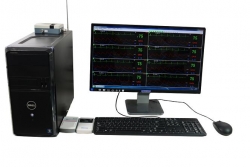Wechat QR code

TEL:400-654-1200

TEL:400-654-1200
Dialysis patients, how to scientifically reduce blood pressure?
Hypertension is common in dialysis patients, with about 50% to 85% of hemodialysis patients and 30% of peritoneal dialysis patients having hypertension. In addition, dialysis patients with poorly controlled hypertension often have unsatisfactory blood volume control, which means that excessive weight gain is easy to occur during the dialysis interphase. In this paper, how to reduce blood pressure scientifically in dialysis patients is summarized.Meilun
The ideal blood pressure
The minimum target blood pressure of dialysis patients should be consistent with the individual health status of patients and prevent hypotension during dialysis. It is recommended that the blood pressure should be less than 140/90 mmHg before dialysis and 130/80mmHg after dialysis.Meilun

In the case of ambulate blood pressure, the daily average ambulate blood pressure is less than 135/85 mmHg, and the nighttime average ambulate blood pressure is less than 120/80 mmHg.
Home blood pressure monitoring: systolic blood pressure between 125 and 145 mmHg is reasonable. Continuous blood pressure monitoring is necessary when there is poor blood pressure control (such as large weight gain during dialysis) and treatment is necessary.
The pathogenesis of
There are various causes of hypertension, and one or more of the following factors may exist:
Reduced sodium excretion capacity causes water and sodium retention and excessive capacity load
Ischemia leads to activation of the renin-angiotensin-aldosterone system
Increased excitability of the sympathetic nervous system
Endodermal vasoconstricting factor increased or endodermal vasoconstricting factor decreased
Use of erythropoietin (EPO)
An excess of parathyroid hormone (PTH) causes elevated levels of intracellular calcium
Arterial calcification
Previous history of essential hypertension
Treatment of hypertension in dialysis patients
Control capacity state
The blood pressure of most dialysis patients can be restored to normal by controlling the capacity state, setting reasonable dialysis "dry weight" and avoiding excessive weight gain during dialysis. To achieve this goal, patients themselves should stick to a low-salt diet, which also helps reduce the symptoms of thirst. However, as a doctor I know that it is difficult for patients to stick to this diet. Another method is to reduce the sodium concentration of dialysis fluid and make individual adjustments.
Prolonged hemodialysis duration and/or increased hemodialysis frequency
Studies have shown that dialysis for 8 hours per time, 3 times a week, can maintain normal blood pressure in most patients without antihypertensive drugs.
Nocturnal hemodialysis (6 to 7 times a week for dialysis while sleeping at night, depending on the amount of sleep required, usually 6 to 12 hours in total) is also associated with good blood pressure control, and almost all patients on nocturnal dialysis can achieve normal blood pressure without taking antihypertensive drugs.
Antihypertensive medication
Antihypertensive drugs are mainly used in dialysis patients with persistent hypertension after adequate volume control, mainly including the following four categories:
Calcium channel blocker
Calcium channel blockers are effective and well tolerated in dialysis patients, and can be used even in patients with excessive volume, especially in patients with left ventricular hypertrophy and diastolic dysfunction. In prospective randomized studies, amlodipine was found to reduce overall mortality in hypertensive dialysis patients compared with placebo. In addition, calcium channel blockers were not supplemented after dialysis.
ACE inhibitors and ARB drugs
ACE inhibitors are well tolerated and are particularly effective in patients with heart failure and acute myocardial infarction following systolic dysfunction. This kind of drug has certain renal protection effect and is the first choice for dialysis patients with good residual renal function.
Side effects include an increased risk of hyperkalemia in patients on long-term hemodialysis, effects of EPO, AN69 dialyzer patients with anaphylaxis (possibly induced by kinin).
Beta blockers
Beta blockers are especially useful in patients who have recently had a heart attack, and patients with systolic failure may also benefit from beta blocker therapy.
Potential side effects of beta blockers include central nervous system inhibition, hyperkalemia (especially with non-selective beta blockers), bradycardia, and increased heart failure. In addition, patients taking calcium channel blockers should be cautious about using beta blockers because of the cumulative negative chronotropic effects and negative inotropic effects that usually occur.
Central sympathetic agonist
Central sympathetic nervous system agonists (such as methyldopa and clonidine) are now less commonly used because of their adverse effects on the central nervous system.
summary
Dialysis patients with hypertension, the first to control the volume state. In addition to medications needed to treat underlying heart disease, blood pressure medications should be withdrawn slowly as the patient reaches dry weight. For younger patients, the process should be completed within 3-6 weeks; For older patients and patients with vascular disease, this is done within 12 to 14 weeks.
Antihypertensive agents should be used if blood pressure continues to rise even after dry weight is reached. Selection needs to be based on the efficacy and side effects of the aforementioned drugs, but antihypertensive drugs should be given once a day in the evening.